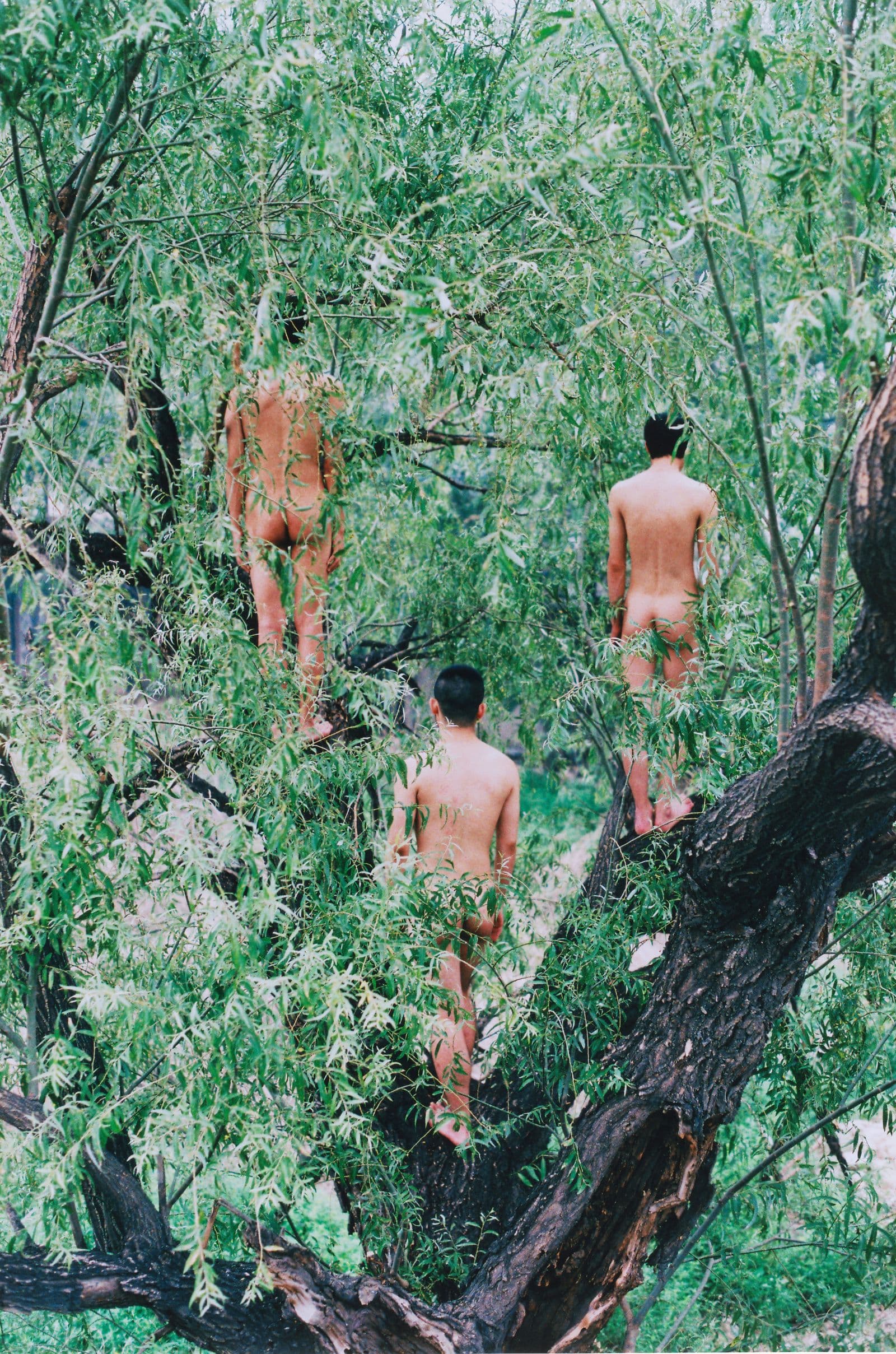Ren Hang: Desire and our freedom to express it

Hang Ren, Untitled 44, 2012, National Gallery of Australia, Kamberri/Canberra, purchased 2018 © Estate of Ren Hang
SHAUNE LAKIN examines the struggle for creative and sexual freedom in a conservative and controlled society through the lens of Chinese photographer, poet and provocateur, the late REN HANG.
I have loved the work of Chinese photographer Ren Hang for years, drawn to the weirdly brutal way it photographically packaged bodies and its slippery queerness.
Earlier this year, the National Gallery was able to acquire a selection of his photographs. We had been working with the artist and his Hong Kong dealer for about two years to acquire a selection of his work, before he tragically committed suicide at the age of 29 in February 2017. Some of the photographs arrived at the Gallery before he passed away, and others — printed by him in 2013 for an exhibition in Hong Kong — were sent to us after his death, and so it feels our collection will retain a strong connection to the life and death of this highly influential Chinese artist.
Ren Hang was the most significant member of a generation of young Chinese photographers whose work developed in the context of China’s recent economic and cultural liberalisation. He had a substantial international profile, not only for exhibitions — around 20 solo and 70 curated group exhibitions while he was alive — but also for his work as a fashion photographer. At the time of his death, he was the subject of two large museum shows in Europe, which coincided with a major Taschen monograph that provides a brilliant account of his highly rigorous practice.
His pictures involve tightly choreographed, often formal arrangements of naked bodies in landscapes and domestic environments. Aside from photographs of his mother, Ren Hang’s subjects were always young Chinese men and women who were usually friends of the artist. They assume enigmatic poses that were often — and controversially in China — sexually explicit, although they were hardly erotic. The bodies of men and women were treated the same way, and his depiction of sexuality was always highly formal — tightly controlled; slightly airless; almost completely still.
Rather than being erotic, the photographs were, more often than not, about the ways that photography treats eroticism and sexuality as subjects. Photographs that engage with fetish objects — hair, gloves, flowers, feet — don’t really seem to ‘do the job’. In one of my favourite pictures among those we acquired, Hang’s partner Huang Jiaqi holds a woman’s long hair in his mouth, in an image that appears to suggest an act of hair fetishism, but it seems completely devoid of any pleasure or excitement.

Hang Ren, Untitled 01, 2012, National Gallery of Australia, Kamberri/Canberra, purchased 2018 © Estate of Ren Hang
Ren Hang disavowed any symbolism or critical commentary in his work, saying that, ‘what-you-saw-was-what-you-saw’. But it’s clear that even by implication, allusion and commentary is there.
For example, the suggestion of social freedom and sexual empowerment in his pictures is often undershot with indications of anxiety or constraint. Bodies twist and contort in some remarkable ways, creating images of bodies folding together we haven’t seen in photography since the great work of the Japanese avant-garde photographer Eikoh Hosoe, whose work was clearly influential for Ren. But while these bodies often seem sexual — they’re often aroused — they seem unable to engage in sex. Friends and intimates — despite their naked, physical proximity — appear unable to relate to each other. Another of my favourite pictures among those we acquired for the national collection shows two naked, in-a-way entwined women on a bed, whose hands (with brightly painted nails) lock around their genitals like chastity belts. People, naked and apparently free in nature, are unable to commune with it. The sexual and social world produced through Ren Hang’s pictures is a profoundly constrained one.
And this is where the implicit commentary kicks in. The disarming tension between control and freedom that runs throughout Ren Hang’s pictures no doubt reflects their place of origin — modern China. Their frank depiction of sexuality, gender and intimacy reflects an uneasy place, one where queerness and the open depiction of sexuality remain the subject of tremendous, punitive social and political regulation.
But it’s too easy to think that the world of restricted, limited or constrained sexual and social life suggested in Ren Hang’s pictures is reflective only of modern China. Australians recently experienced a very contentious same-sex marriage debate that was divisive and personally very challenging for many of us. In fact, the same-sex marriage debate and vote (which resulted in an overwhelming support for the legalisation of same-sex marriage) showed that constraints still exist here in Australia for those of us seeking sexual and social equality. For many Australians, there remains a disjunct between our desire and our freedom to express it. This is precisely what I see in Ren Hang’s photographs.

Hang Ren, Untitled 53, 2012, National Gallery of Australia, Kamberri/Canberra, purchased 2018 © Estate of Ren Hang

